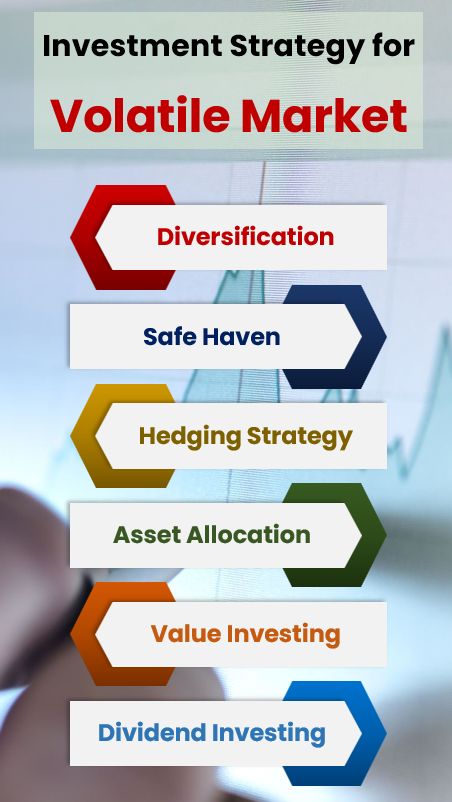Investing In Volatile Markets: Strategies For Success Amidst Huge Stock Swings

Table of Contents
Understanding Market Volatility
Market volatility refers to the rate and extent of price fluctuations in financial markets. Understanding its causes and how to measure it is crucial for successful investing.
Identifying the Causes of Volatility:
Market volatility is rarely caused by a single factor; instead, it's usually a complex interplay of several influences:
- Geopolitical Events: Wars, trade disputes, and political instability significantly impact investor sentiment and market confidence, leading to price swings. The war in Ukraine, for example, had a profound effect on global energy prices and market stability.
- Economic Indicators: Inflation rates, interest rate changes, and unemployment figures all influence market behavior. High inflation often leads to increased volatility as investors adjust their portfolios.
- Company-Specific News: Earnings reports that fall short of expectations, corporate scandals, or unexpected leadership changes can trigger sharp price movements in individual stocks.
- Market Sentiment and Psychology: Fear and greed are powerful drivers of market volatility. Panic selling during market downturns can exacerbate price drops, while excessive optimism can inflate asset bubbles.
- Unexpected Events: Natural disasters, pandemics, and other unforeseen events can cause sudden and significant market disruptions. The COVID-19 pandemic is a prime example of an unexpected event that caused extreme market volatility.
Measuring Market Volatility:
Several tools help investors gauge market volatility:
- Volatility Indices (VIX): The VIX, often called the "fear index," measures the implied volatility of S&P 500 index options. A higher VIX indicates greater expected market volatility.
- Historical Volatility Analysis: Examining past price fluctuations can provide insights into the typical volatility of a specific asset or market.
- Standard Deviation: This statistical measure quantifies the dispersion of returns around the average, providing a numerical representation of risk. Higher standard deviation implies higher volatility.
Diversification Strategies for Volatile Markets
Diversification is a cornerstone of successful investing in volatile markets. It involves spreading your investments across various asset classes and geographies to reduce overall risk.
Asset Class Diversification:
A well-diversified portfolio includes a mix of:
- Stocks: Both domestic and international stocks offer diversification benefits, though international stocks may carry additional currency risk.
- Bonds: Government and corporate bonds offer relatively lower risk compared to stocks, providing stability during market downturns.
- Real Estate: Real estate investments can act as a hedge against inflation and offer diversification benefits.
- Commodities: Commodities like gold and oil can serve as inflation hedges and provide diversification in a volatile market environment.
- Alternative Investments: Hedge funds and private equity offer potential diversification but often come with higher fees and liquidity constraints.
Geographic Diversification:
Don't put all your eggs in one basket – geographically speaking!
- Reducing Reliance on a Single Market: Investing in multiple countries reduces exposure to any single market's economic or political instability.
- Investing in Emerging Markets: Emerging markets offer higher growth potential but also carry significantly higher risk.
- Hedging Against Currency Fluctuations: Using currency hedging strategies can mitigate losses caused by exchange rate fluctuations.
Risk Management Techniques in Volatile Markets
Effective risk management is paramount when investing in volatile markets. Several techniques can help protect your portfolio.
Setting Stop-Loss Orders:
- Protecting Against Significant Losses: Stop-loss orders automatically sell an asset when it reaches a predetermined price, limiting potential losses.
- Defining Acceptable Risk Tolerance: Setting appropriate stop-loss levels depends on your individual risk tolerance and investment goals.
Dollar-Cost Averaging (DCA):
- Reducing the Impact of Market Timing: DCA involves investing a fixed amount of money at regular intervals, regardless of market price. This strategy mitigates the risk of investing a lump sum at a market peak.
- Investing a Fixed Amount at Regular Intervals: This disciplined approach helps average out the cost of your investment over time.
Hedging Strategies:
- Using Options or Futures Contracts: Options and futures contracts can be used to hedge against potential losses in other parts of your portfolio. This is a more advanced strategy requiring considerable market understanding.
- Short Selling (Advanced Strategy, High Risk): Short selling involves borrowing and selling an asset, hoping to buy it back later at a lower price. This is a high-risk strategy only suitable for experienced investors.
Long-Term Investing vs. Short-Term Trading in Volatile Markets
The approach you take significantly impacts your success in volatile markets.
The Benefits of a Long-Term Approach:
- Averaging Out Market Fluctuations: Over the long term, market fluctuations tend to average out.
- Riding Out Short-Term Volatility: Long-term investors are less affected by temporary market dips.
- Compounding Returns Over Time: The power of compounding allows your investments to grow exponentially over the long term.
The Risks and Rewards of Short-Term Trading:
- Higher Potential for Profits (and Losses): Short-term trading offers the potential for quick profits but also carries a higher risk of significant losses.
- Requires Significant Market Knowledge and Skill: Successful short-term trading requires extensive market knowledge, technical analysis skills, and discipline.
- Increased Transaction Costs: Frequent trading leads to higher brokerage fees and taxes.
Emotional Discipline in Volatile Markets
Maintaining emotional discipline is crucial for successful investing in volatile markets.
Avoiding Panic Selling:
- Sticking to a Well-Defined Investment Plan: Having a clear investment plan helps you avoid impulsive decisions during market downturns.
- Ignoring Short-Term Market Noise: Focus on your long-term goals and avoid being swayed by daily market fluctuations.
Resisting the Urge to Time the Market:
- The Difficulty of Accurately Predicting Market Tops and Bottoms: Market timing is notoriously difficult, even for professionals.
- The Importance of Consistent Investing: Regular, consistent investing is a far more effective strategy than trying to time the market.
Seeking Professional Advice:
- Consulting with a Financial Advisor: A qualified financial advisor can help you develop a personalized investment strategy tailored to your risk tolerance and financial goals.
Conclusion
Successfully investing in volatile markets requires a multi-pronged approach encompassing diversification, robust risk management, and unwavering emotional discipline. Understanding the causes and measures of volatility, coupled with a long-term perspective, significantly improves your chances of success. By implementing the strategies discussed – including diversification across asset classes and geographies, employing risk management techniques like stop-loss orders and dollar-cost averaging, and maintaining emotional control – you can navigate market fluctuations and achieve your financial objectives. Consider consulting a financial advisor to create a personalized plan for navigating the complexities of investing in volatile markets. Remember, consistent learning and adapting to market conditions are crucial for long-term success.

Featured Posts
-
 Bayerns Six Point Bundesliga Lead A Hard Fought Win Against St Pauli
Apr 25, 2025
Bayerns Six Point Bundesliga Lead A Hard Fought Win Against St Pauli
Apr 25, 2025 -
 Jets 2025 Draft Needs Picks Best Fits And Historical Context
Apr 25, 2025
Jets 2025 Draft Needs Picks Best Fits And Historical Context
Apr 25, 2025 -
 Vpliv Trampa Na Viynu V Ukrayini Analiz Yogo Zayav
Apr 25, 2025
Vpliv Trampa Na Viynu V Ukrayini Analiz Yogo Zayav
Apr 25, 2025 -
 Nintendo Switch 2 Preorder Problems Lessons Learned From A Messy Rollout
Apr 25, 2025
Nintendo Switch 2 Preorder Problems Lessons Learned From A Messy Rollout
Apr 25, 2025 -
 Charlottesville Meteorologist Faces Felony Charges Sexual Extortion Allegations
Apr 25, 2025
Charlottesville Meteorologist Faces Felony Charges Sexual Extortion Allegations
Apr 25, 2025
Latest Posts
-
 The 1 Million Debt Relief Michael Sheens Impact On 900 Lives
May 01, 2025
The 1 Million Debt Relief Michael Sheens Impact On 900 Lives
May 01, 2025 -
 Michael Sheens Generosity 1 Million Debt Relief Initiative
May 01, 2025
Michael Sheens Generosity 1 Million Debt Relief Initiative
May 01, 2025 -
 900 People Receive Debt Relief Thanks To Michael Sheens 1 Million Donation
May 01, 2025
900 People Receive Debt Relief Thanks To Michael Sheens 1 Million Donation
May 01, 2025 -
 Actor Michael Sheen Pays Off 1 Million In Debt
May 01, 2025
Actor Michael Sheen Pays Off 1 Million In Debt
May 01, 2025 -
 Arc Raiders Second Public Test What To Expect This Month
May 01, 2025
Arc Raiders Second Public Test What To Expect This Month
May 01, 2025
